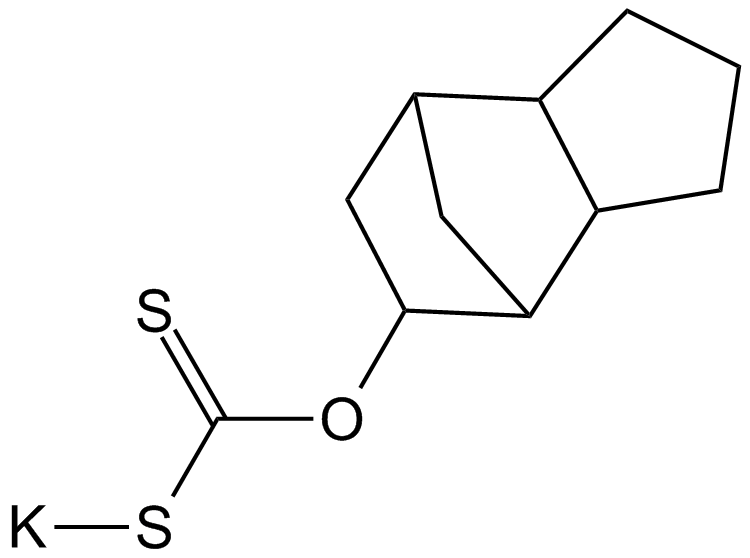D609 (Synonyms: Tricyclodecan9yl xanthogenate) |
| Katalog-Nr.GC17851 |
A competitive inhibitor of PC-specific PLC
Products are for research use only. Not for human use. We do not sell to patients.

Cas No.: 83373-60-8
Sample solution is provided at 25 µL, 10mM.
D609 is a specific and competitive inhibitor of phosphatidylcholine-specific phospholipase C (PC-PLC) with a Ki value of 6.4 μM. [1]
PC-PLC hydrolyzes (phosphatidylcholine) PC to generate 1, 2-diacylglycerol (DAG) and phosphocholine. D609 is a widely known inhibitor of PC-PLC and also inhibit sphingomyelin synthase (SMS). Due to these actions, it has antiviral and antitumor properties. D609 does not inhibit bacterial phosphatidylinositol (PI)-PLC, bovine pancreatic PLA2 or phospholipase D from cabbage[1b]. In OVCAR3 cells treated with (53 μg/mL) for 24 h, PC-PLC activity was significantly inhibited and cell proliferation was affected. In breast cancer cells, the activity of PC-PLC decreased 3.5 fold after the incubation with D609 (50 μg/ml) within 1h. The human epidermal growth factor receptor 2 (HER2) was also down-regulated [2]. D609 also has anti-inflammatory functions. It blocked the nitric oxide synthase induced by LPS (IC50=20 μg/mL) and IL-1β induced vascular cell adhesion molecule 1 gene expression in human endothelial cells.[3]
D609 can reduce sphingomyelin synthase, thereby it inhibits bFGF-stimulated astrocyte proliferation. Because of the presence of the thiol function, D609 also has antioxidant/glutathione mimetic properties[1b].
References:
1. a) E. Amtmann, Drugs Exp Clin Res 1996, 22, 287-294; b) R. M. Adibhatla, J. F. Hatcher and A. Gusain, Neurochem Res 2012, 37, 671-679.
2. L. Paris, S. Cecchetti, F. Spadaro, L. Abalsamo, L. Lugini, M. E. Pisanu, E. Iorio, P. G. Natali, C. Ramoni and F. Podo, Breast Cancer Res 2010, 12, R27.
3. a) K. Tschaikowsky, M. Meisner, F. Schonhuber and E. Rugheimer, Br J Pharmacol 1994, 113, 664-668; b) R. R. Cobb, K. A. Felts, G. C. Parry and N. Mackman, Mol Pharmacol 1996, 49, 998-1004. >
Average Rating: 5 (Based on Reviews and 30 reference(s) in Google Scholar.)
GLPBIO products are for RESEARCH USE ONLY. Please make sure your review or question is research based.
Required fields are marked with *




















